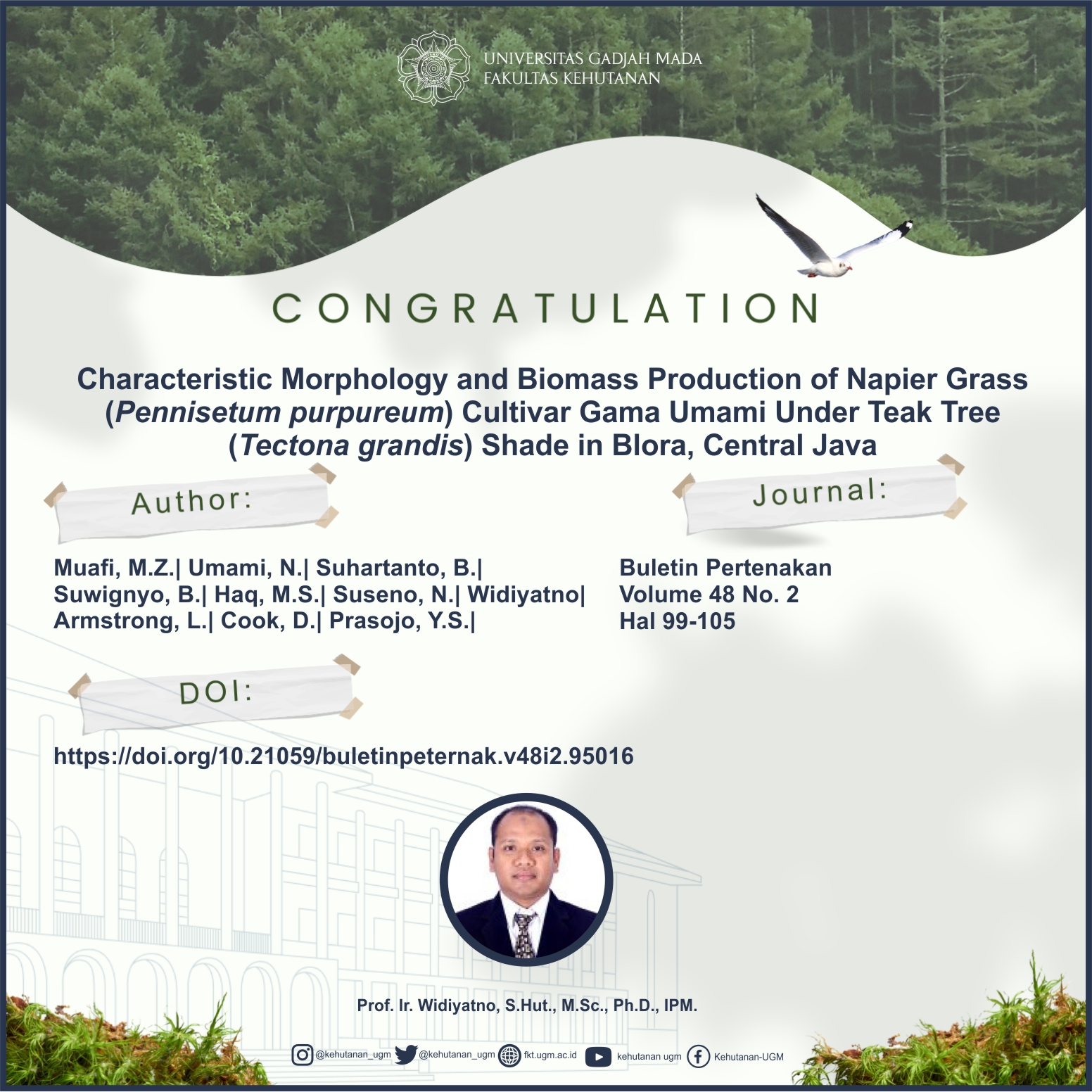
Abstract
This study aims to determine the characteristic morphology and biomass production of Napier grass (Pennisetum purpureum) cultivar Gama Umami under teak tree (Tectona grandis) shade in teak tree forest area of Blora, Central Java. The grass was planted using stem cuttings and maintained for four months using the randomized block design (RBD) method with six repetitions in each treatment. This study consisted of two treatments, namely shade under teak tree stands and non-shade or open area as a control. Maintenance was carried out for 14 weeks with the addition of fertilizers, such as NPK (nitrogen, phosphor, and potassium) and urea. Parameters measured included plant height, leaf length, leaf width, first collar length, number of tiller, and stem diameter. After 14 weeks the plants were harvested, and biomass production data were obtained. The results showed that there were no differences in leaf length, leaf width, first collar length, number shoots, and stem diameter between under the shade and non-shade of teak trees. However, the plant height and biomass production of Napier grass cultivated in non-shade teak trees were higher than under the shade of teak trees. The finding showed that Napier grass cultivar Gama Umami could be cultivated under the shade of teak tree forest and introduce for silvopasture system in teak trees forest area.
SDGs:
1. SDGs 2: Zero Hunger
2. SDGs 12: Responsible Consumption and Production
3. SDGs 13:Climate Action
4. SDGs 15:Life on Land
Link Dokumen:
Download
